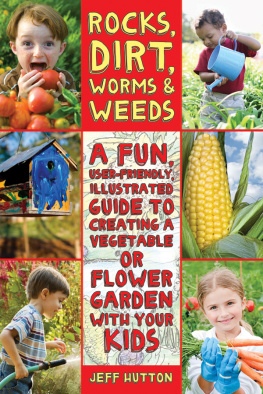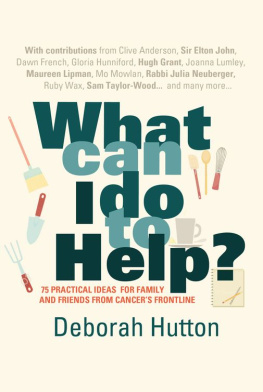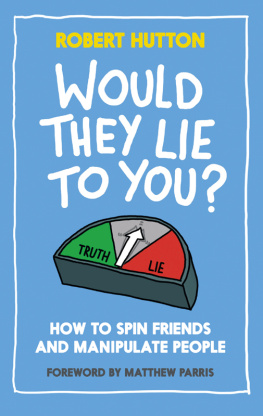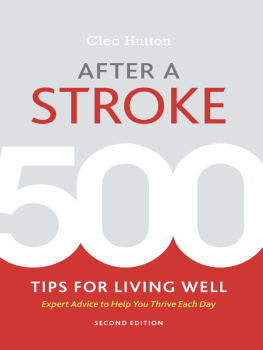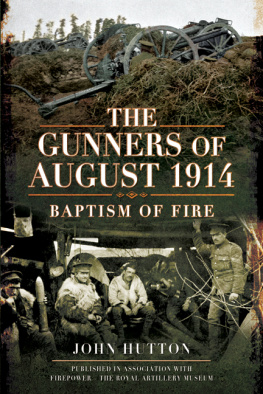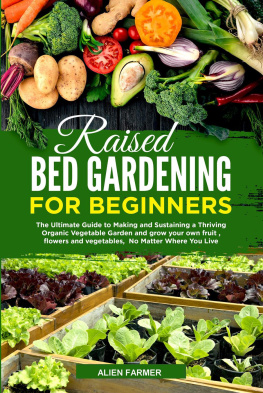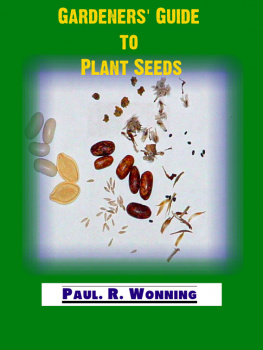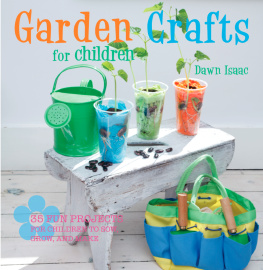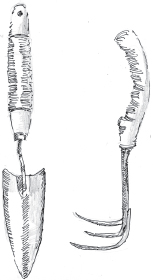
To my wife, Diane
And to the smaller gardeners in our life:
Riley, Dylan, Molly, Colby, Chase, and Sienna
Acknowledgments: This would not have been possible without the wonderful collaboration of my editor, Lilly Golden, and everyone at Skyhorse who helped imagine this book.
Copyright 2012 by Jeff Hutton
All Rights Reserved. No part of this book may be reproduced in any manner without the express written consent of the publisher, except in the case of brief excerpts in critical reviews or articles. All inquiries should be addressed to Skyhorse Publishing, 307 West 36th Street, 11th Floor, New York, NY 10018.
Skyhorse Publishing books may be purchased in bulk at special discounts for sales promotion, corporate gifts, fund-raising, or educational purposes. Special editions can also be created to specifications. For details, contact the Special Sales Department, Skyhorse Publishing, 307 West 36th Street, 11th Floor, New York, NY 10018 or .
Skyhorse and Skyhorse Publishing are registered trademarks of Skyhorse Publishing, Inc., a Delaware corporation.
Visit our website at www.skyhorsepublishing.com.
10 9 8 7 6 5 4 3 2 1
Library of Congress Cataloging-in-Publication Data is available on file.
ISBN: 978-1-61608-722-7
Printed in China
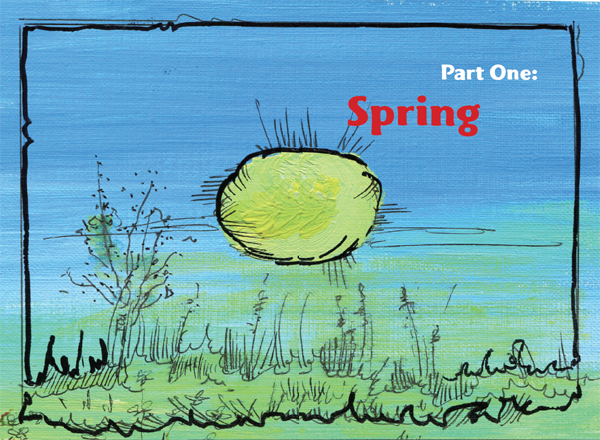
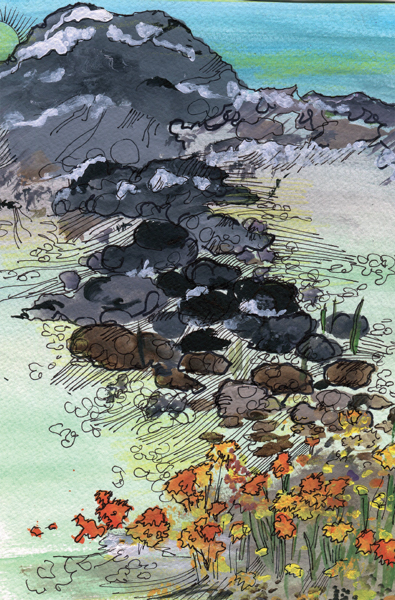
Over many years, large earth masses have eroded and added to the earths surface of healthy soil.

1
GETTING DIRTYALL ABOUT SOIL AND MORE
D irtor top soil, as we gardeners like to call itis the foundation of everything we grow. Its really one of the foundations of life itself. It allows us to grow food crops like vegetables and fruit, grains, herbs, and plants used for medicines. It supports the plants that clean the air through their own living process and allows the growth of roots and foliage (or leaves), which slow down the ongoing process of erosion. And remember that cows eat grass and grains that grow in our good soil and then they give us milk and even ice cream.
ITS ALIVE! Top soil is alive, and thats what makes it so important. Soil is a product of large rocks slowly breaking down into smaller rocks and finally into tiny particles. A long time ago, when the earth was young, big blocks of ice called glaciers moved across its surface and dragged rocks and other stuff with it. Over the years the huge boulders broke down slowly into smaller rocks. They bumped and broke until they became smaller and smaller. Animals and other living things eventually died and became part of the earths top layer. Little plants struggled to grow, and when they died they became part of this top layer too. Living things contribute what we call organic matter to the earths surface. On a smaller scale this goes on every day to continue a healthy cycle.
Ground actually moves and shifts with different temperatures. When it gets really cold, the ground freezes and rocks move upward. The friction of this movement wears the rock down too. Friction actually produces heat as well. Rub your hands together a few times. You can feel the warmth. Over a lot of years wind and rain and friction wore the big rocks down moreeven rolled them with strong wind and ground that shifted with changing temperatures and weather.
Old leaves and other plants full of little microbes (a fancy word for tiny living things) fall to the ground and decay, adding to the dirt. Insects and other little creatures tunnel though, exchange air, allow for the movement of water, and finally complete their life cycles, becoming part of the world of soil and the continuing cycle of nature. Other plants, such as moss, grow in the decaying environment, adding even more nutrients, and help turn dirt to soil. Its like a big soup of different ingredientsall very important to the final recipe.
This living soil is all around us.
Healthy soil is always changing, from a long time ago when the rock masses were being worn down to pebbles and smaller particles, and even now, in your backyard, as leaves and flowers fall and bugs settle into the ground, becoming part of the healthy mix, ready to grow your garden.
So lets get out into the yard and garden and check out whats in our top soil.
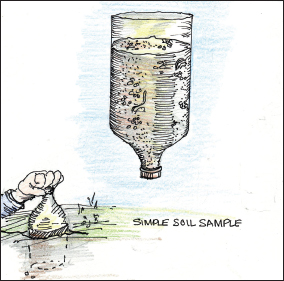
Exploring below the surface

Simple Soil Sample Kit
Take an empty plastic soda bottle and cut the bottom off. Twist the bottle into a soft part of the yard or garden on a slightly damp day. Flip it upside down and youll end up with a column sample of the top soil. You can tell by the color if its dark and rich or light and sandy. Geologists and other professionals do this on a larger scale: these are called core samples.
If it falls apart and spills out, you must have fairly sandy soil. If it sticks together, it usually contains more clay. If you have very sandy soil, you can improve it by adding organic material like compostabout it if you like!) If your soil clumps together, you may need to improve drainage by adding sand or fine gravel.
Remember, this is a simple beginners test. Its a good way to gain an understanding of top soil. You can take samples from different parts of the yard to compare. But you can also get soil kits from a local agricultural extension center if you want more information. Many of these places will offer a free scientific evaluation of your garden soil.
Gardening always involves exploration and discovery. One of the important discoveries of gardening is finding how much you get in return for your efforts. And once they get started, many people become lifetime gardeners. Its a pastime that almost always produces results.

Decorating Your Own Garden Tool Box
Keeping your own tools and adding to your collection can be a lot of fun. Find an old wooden box, like the kind wine bottles or fruit come in. You can paint it or decorate it in some way to give it your own style. Gardening should be a creative activity and your garden can reflect your own personality. Use the garden box to hold your garden tools, gloves, seed packets, and anything else you collect that may be useful.

Customize your box and make it your own. Keep your tools clean and easy to find.
A Start-up Kit for Young Gardeners:
Here are a few tools that will come in handy:
A hand trowel
A hand cultivator
Garden gloves
A small rake
A small shovel
Pants or shorts you dont mind getting dirty
Old sneakers or rubber gardening shoes

